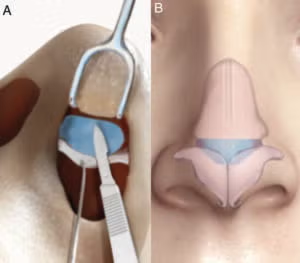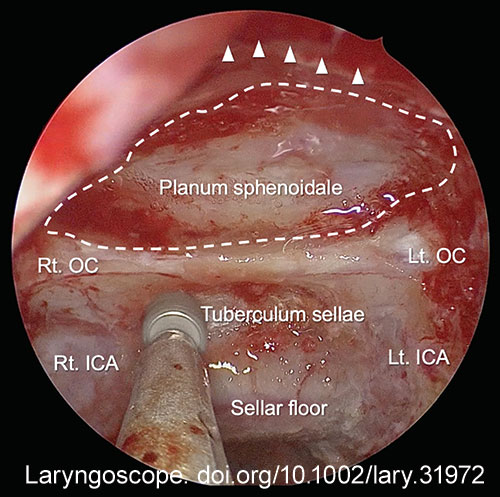Does long-term exposure to fine particulate matter (PM2.5) increase the risk of developing CRSwNP?

Secondary Contouring for the Butterfly Graft: Improving Form and Preserving Function
The butterfly graft (BFG) is a surgical technique used to treat nasal airway obstruction by reconstructing the internal nasal valve, but it can lead to external nasal contour irregularities. This study evaluates a secondary contouring procedure designed to address these irregularities while preserving nasal function and improving patient satisfaction.
Factors Associated with High‐Risk Ergonomic Postures During Office‐ Based Rhinology Procedures: A Pilot Biomechanical Analyses
What ergonomic risks do rhinologists face during common office-based procedures, and how does procedure type influence the frequency of high-risk postures?
Comparing Efficacy of Steroid Irrigation, Steroid‐Eluting Sinus Stent, and Both Modalities on Endoscopic Outcomes After Endoscopic Sinus Surgery
What is the comparative efficacy of steroid irrigation, steroid-eluting sinus (SES) stents, and their combination in improving endoscopic outcomes following ESS in patients with chronic rhinosinusitis?

In-Office Rhinology Practices Continue to Grow
In a 2016 survey of American Rhinologic Society (ARS) members on practice patterns regarding office-based rhinology procedures, 63% of the respondents reported an increase in the number of office-based procedures they performed over the last five years.

How To: Superior Maximization of Sphenoidotomy with Olfaction Preservation in Endoscopic Endonasal Surgery
In endoscopic endonasal surgery for anterior skull base lesions, maximizing the anterior sphenoidotomy in the superior part is crucial for ensuring direct visualization and creating a wide working corridor. Authors describe a technique they devised that maximizes upper anterior sphenoidotomy while preserving the olfactory mucosa.

What Is Considered Adequate Surgery for Chronic Rhinosinusitis with Nasal Polyps?
Chronic rhinosinusitis (CRS) is among the most prevalent chronic medical conditions globally. A survey of Canadian households reported the prevalence of CRS to be 5%. CRS is a clinical syndrome defined by persistent symptomatic inflammation of the mucosa in the nasal cavities and sinuses. A common subtype of CRS is CRS with nasal polyps (CRSwNP), which is identified through endoscopy or imaging
Conservative Treatment Comes First When Addressing ENS
Currently, initial treatment approaches to ENS prioritize conservative management; given the complexity and severity of the condition, patients and clinicians should approach surgical options with caution.

Empty Nose Syndrome: Physiological, Psychological, or Perhaps a Little of Both?
ENS represents one of the more complex conditions in otolaryngology, characterized by the paradoxical feeling of nasal obstruction despite objectively patent airways. In addition to the feeling of severe nasal obstruction—one patient called it “suffocating with every breath”—patients also report dryness, burning, and crusting. The quality-of-life impact can be so great that some patients travel the world seeking multiple consultations and revision surgeries.
TXA: Potentially Useful Adjunct in the Management of Anterior Epistaxis
Current literature suggests that topical TXA could potentially be a useful adjunct in the management of anterior epistaxis.
- 1
- 2
- 3
- …
- 31
- Next Page »